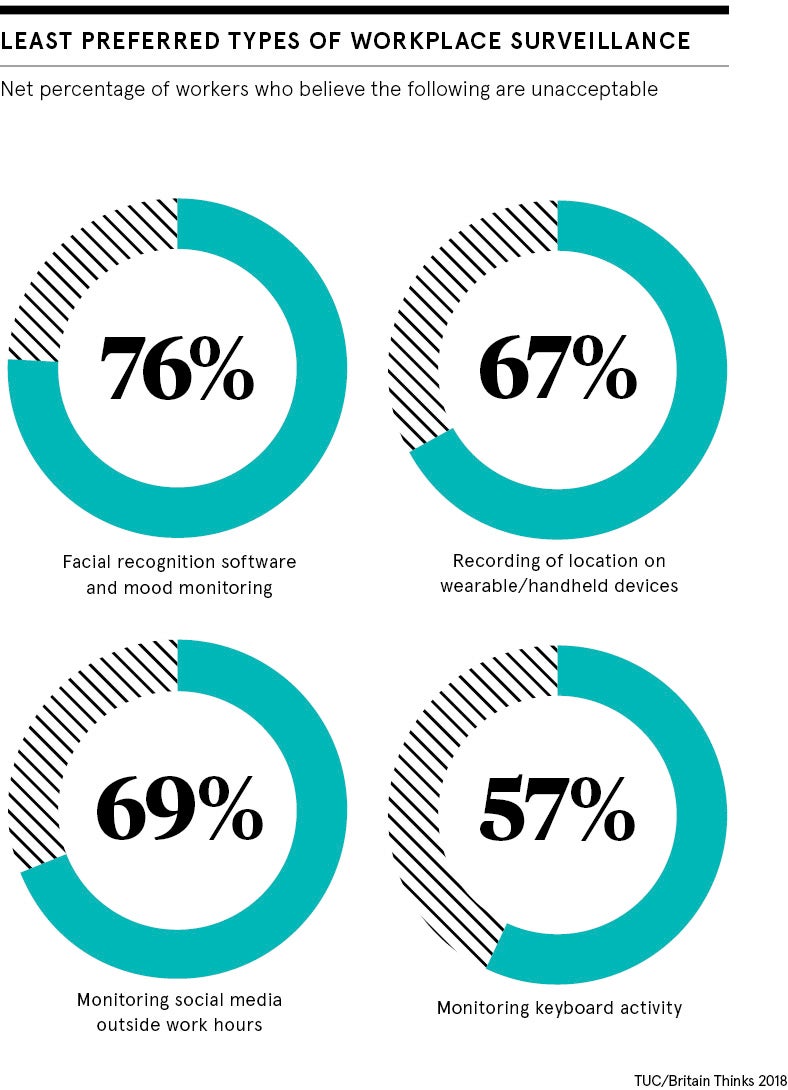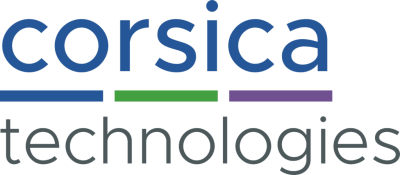US supermarket chain Walmart has patented surveillance technology that would enable it to eavesdrop on employees’ conversations with customers.
The aim, according to the patent application, was to establish whether “employees are performing their jobs efficiently and correctly”, and improve both cost-savings and customer satisfaction. Worker satisfaction wasn’t mentioned.
Monitoring toilet breaks, tracking and snooping on staff outside working hours creates fear and distrust
This is just one example of the ways in which artificial intelligence (AI) is increasingly being used to monitor workers in the workplace. While the Walmart technology isn’t yet in use, and may never be, other companies are enthusiastically surveilling every aspect of their staff’s activity at work.
Why are organisations using AI in the workplace?
In a survey last year, Gartner found that 22 per cent of organisations around the world are collecting data on their employees’ movements. Some 17 per cent are monitoring computer usage and 16 per cent are monitoring staff calendars. Most notably, though, nearly six in ten said they planned to be using such technologies in future.
The advantages for organisations are, at least on the surface, clear. They can track the productivity of individual workers, compare the efficiency of different projects, and maintain traceability, accountability and compliance. In recent research, consultancy Accenture found that seven in ten business leaders expected workplace data analysis to improve productivity.
“Workplace data can be used to spot and improve work patterns to speed time to market or improve speed of adoption of change programmes with customised incentives for individuals,” says Eva-Sage Gavin, who leads Accenture’s talent and organisation practice globally.
“Overall, 77 per cent of business leaders say new sources of workforce data will help them grow their business, 76 per cent say it will help them transform the business for agility and efficiency, and 74 per cent say it will help unlock the full potential of their people.”
Increasing productivity requires more than AI surveillance
However, staff monitoring only improves performance under certain circumstances, according to research by Bartels and Nordstrom in 2012. It was only when monitoring was combined with a clear performance management framework, and linked with employee compensation and benefits, that real improvements were seen.
When employees were monitored without any explanation or when there were no corresponding performance measures or rewards, performance stayed much the same.
Employees, meanwhile, are suspicious. In a recent survey by the TUC, British workers revealed that most believe they are being monitored by their employers, and two-thirds said they feared this was fuelling distrust and discrimination. They were concerned that the use of AI in the workplace meant that surveillance data was being used to set unfair targets, over-scrutinise their work, and take away autonomy and control.
“Employers must not use tech to control and micromanage their staff,” says TUC general secretary Frances O’Grady. “Monitoring toilet breaks, tracking and snooping on staff outside working hours creates fear and distrust. And it undermines morale.”

Could AI capabilities lead to misuse of employee data?
In America, in particular, the use of staff surveillance combined with AI in the workplace is booming and extending into areas that would once have been inconceivable.
Aiha Nguyen, labour engagement lead for the Data & Society Research Institute, cites the use of fitness trackers, now supplied to staff at one in five large US firms offering health benefits. She says: ”The type of data being collected is well beyond what many would argue as elements of your job. What does your food consumption have to do with how well you do your job?
“It’s the question of whether the purpose of this type of tool is to really improve productivity. And, really, it is tied to efforts by companies to cut the cost of employees, so theoretically the fitness apps and devices are meant to cut the cost of providing health insurance for employees.”
There are also, she says, several instances where these devices have raised issues regarding discrimination.
“If an app can give an employer information about whether an employee is going to be pregnant, could that be used to fire them or somehow not promote a woman because she’s pregnant?” she asks.
“I think there have been instances where this could be bordering on breaking some other laws, so in addition to new regulation there has to be a better way of looking to see whether the data is being used as a proxy and these other laws are being broken.”
Employees should have control over how their data is used
Such techniques could in theory be just the tip of the iceberg. In China, for example, businesses are reportedly even monitoring employees’ brain waves to detect their emotions using a combination of EEG sensors and AI in the workplace.
Unsurprisingly, workplace surveillance can lead to a lack of trust among employees and it’s this that’s fatal to any hoped-for productivity benefits, according to the Accenture report.
“Seventy per cent of employees say that in return for their permission to collect data, employers need to give them control over how it is used,” says Accenture’s Ms Gavin. “Give employees the ability to see, manage and even delete their own data when appropriate; ask for consent when possible and when it makes business sense.”
Australia’s largest telecommunications company Telstra, for example, maintains an internal site called MyCareer that allows workers to keep and update their own career data, and even challenge any incorrect or incomplete entries.
Organisations should also build a governance system to make sure workplace data and technologies are used responsibly, with a clearly accountable C-level executive supported by an executive coalition. They should use AI in the workplace to identify hidden skills and offer staff targeted training, says Ms Gavin.
Strict rules needed before implementing AI surveillance
Similarly, the TUC is calling on employers to only use surveillance for legitimate reasons that protect the interests of workers, such as ensuring people can work safely.
“We’d like to see the law strengthened with a legal requirement for employers to consult workers before introducing surveillance technologies,” says Ms O’Grady.
“Data protection law places limits on when and how employers should use new technology to monitor staff, but employers are not always aware of how the law applies in the workplace. So the government and employer organisations should consider how they can help improve awareness.”
In the European Union, the General Data Protection Regulation means workers do at least have the right to know what data is being collected on them and how it’s being used. However, Ms Gavin says two thirds of workers are still concerned their data could be misused. Reassuring them is key to success.
“If businesses gather data in a way that diminishes trust, they risk losing more than 6 per cent of future revenue growth,” she says. “But if they adopt responsible strategies, the trust dividend could be worth more than a 6 per cent increase in future revenue growth.”
Increasing productivity requires more than AI surveillance






